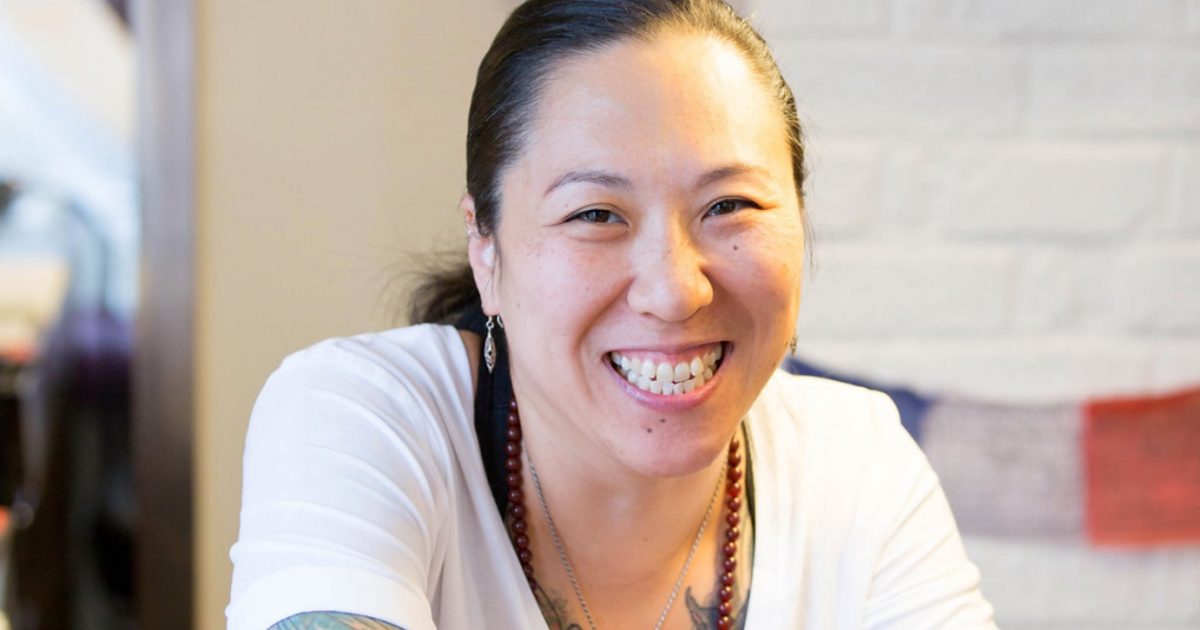A Chemo Port Scar Becomes Body Art
- Amy Black, a tattoo artist based in Richmond, Virginia, is known for her mastectomy and, more recently, her chemo port scar tattoos.
- Breast cancer survivor Jessica Bourne had Black cover her chemo port scar with a black and white jellyfish. She says it allowed her to forget about her treatment and “live again.”
- A chemo port is a small, implantable reservoir with a thin tube that attaches to a vein; it's used to administer chemotherapy.
Black, owner of Amy Black Tattoos in Richmond, Virginia, has been perfecting her craft for more than 20 years. In 2010, she partnered with breast cancer groups and medical teams across the country and began doing specialized tattoos for women who’ve undergone mastectomies. She even created the Pink Ink Fund to help financially support breast cancer patients with their post-mastectomy tattoos.
Read More
Breast cancer survivor and police forensic investigator Jessica Bourne was diagnosed with stage 2-3 triple-negative breast cancer at age 26. She connected with Black to request a speciality tattoo following her treatment in 2020, but this one wasn’t for a mastectomy. Instead, Bourne had Black cover the inch-and-a-half chemotherapy port scar on her chest.
“I could just feel every pain, every sadness, every anger of me just disappear,” Bourne told NBC12. “It was amazing.”
Black admits that these kinds of coverups can be tricky because of the port scars’ varying textures and sizes, but she’s more than happy to do it.

“I'm just honored to be able to give this person something that is helping to shift their perspective away from having to deal with cancer and not having to look down and see that little reminder every day,” Black said.

Thanks to Black, Bourne can now think of the black and white jellyfish that covers her scar symbolic of regeneration instead of the medicine that used to enter her body.
“I immediately sent the picture [of the tattoo] to my mom and dad, and they were just like ‘we can tell in your eyes how much better you feel,'” she said. “It was just like everything from the past year just disappeared, and I could live again.”
Understanding Breast Cancer
Screening for breast cancer is typically done via mammogram, which looks for lumps in the breast tissue and signs of cancer. And while mammograms aren't perfect, they are still a great way to begin annual screening. The American Cancer Society (ACS) recommends women begin mammogram screening for breast cancer at age 45. It's also important to be on top of self breast exams. If you ever feel a lump in your breast, it's important to be vigilant and speak with your doctor. Voicing your concerns as soon as you have them can lead to earlier cancer detection which, in turn, can lead to better outcomes.
RELATED: When Should I Get a Mammogram?
There are many treatment options for people with this disease, but treatment depends greatly on the specifics of each case. Identifying these specifics means looking into whether the cancerous cells have certain receptors. These receptors the estrogen receptor, the progesterone receptor and the HER2 receptor can help identify the unique features of the cancer and help personalize treatment. In the case of Jessica Bourne, her cancer cells tested negative for estrogen, progesterone and HER2 receptors meaning her breast cancer is triple-negative.
"These receptors, I like to imagine them like little hands on the outside of the cell, they can grab hold of what we call ligands, and these ligands are essentially the hormones that may be circulating in the bloodstream that can then be pulled into this cancer cell and used as a fertilizer, as growth support for the cells," Dr. Elizabeth Comen, a medical oncologist at Memorial Sloan Kettering Cancer Center, tells SurvivorNet.
The Unique Features of Breast Cancer: Deciding the Right Course of Treatment
One example of a type of ligand that can stimulate a cancer cell is the hormone estrogen, hence why an estrogen receptor positive breast cancer will grow when stimulated by estrogen. For these cases, your doctor may offer treatment that specifically targets the estrogen receptor. But for HER2 positive breast cancers, therapies that uniquely target the HER2 receptor may be the most beneficial.
What is a Chemo Port?
It was Jessica Bourne’s chemo port that brought her to Amy Black. And although it’s gone today, it played a big role in her cancer journey.
“You get used to it,” Bourne told NBC12. “It was kind like of part of you, but once it's removed, it's like what do you do?”
In an earlier interview with SurvivorNet, Dr. Scott Rushing, a gynecologic oncologist with Compass Oncology in Vancouver, Washington, explains the function of a port. He says, “A portacath is a device that we implant in the upper chest that allows our nurses, our radiology colleagues to be able to access, intravenous access to be able to draw blood.”
“More importantly,” says Dr. Rushing, “it also gives us an opportunity to administer your chemotherapy. If you're having a CT scan it's another means by which they can give a contrast. So it really does save you the multiple sticks that are required during your term of receiving chemotherapy and in treatment for your cancer.”
RELATED: Living With Chemotherapy
Dr. Rushing describes how a port has two separate components. “The first is made out of a very specialized plastic or sometimes even titanium,” he says. “It has a reservoir. It has a very special plastic that's on top of it called a diaphragm where a special needle goes into. And then whether you're putting chemotherapy in, it then exits out of a catheter that's attached to the port.”
The other component is the catheter, which is “usually about a 20 to 25 centimeters in length,” he says. The chemo port can remain in place as long as it's needed for treatment. It can stay where it is for weeks, months, and even years. A chemo port will be removed when it's no longer needed for treatment, and the removal process is fairly seamless. It's a simple outpatient procedure to get rid of the port.
Contributing: Anne McCarthy
Learn more about SurvivorNet's rigorous medical review process.


